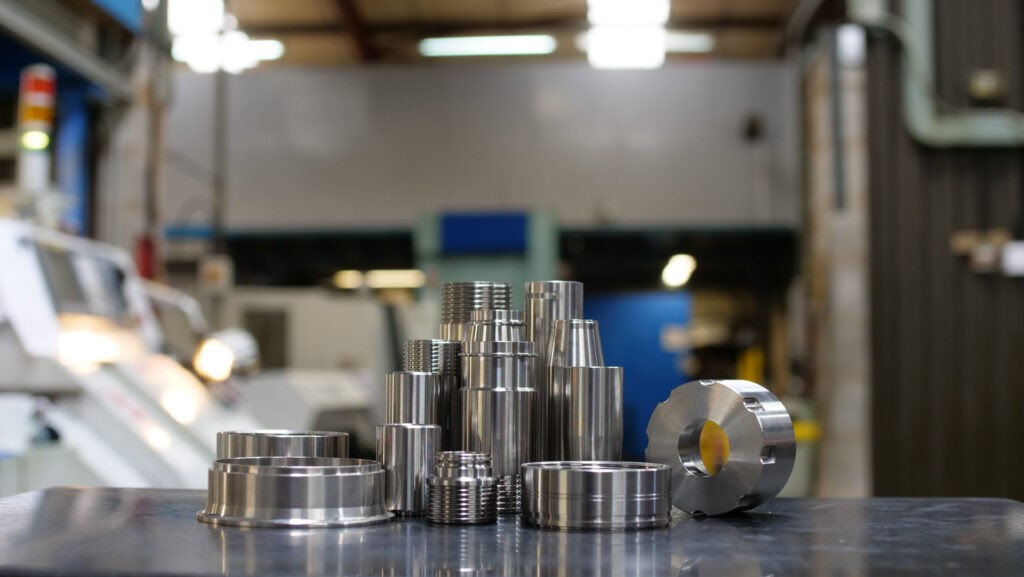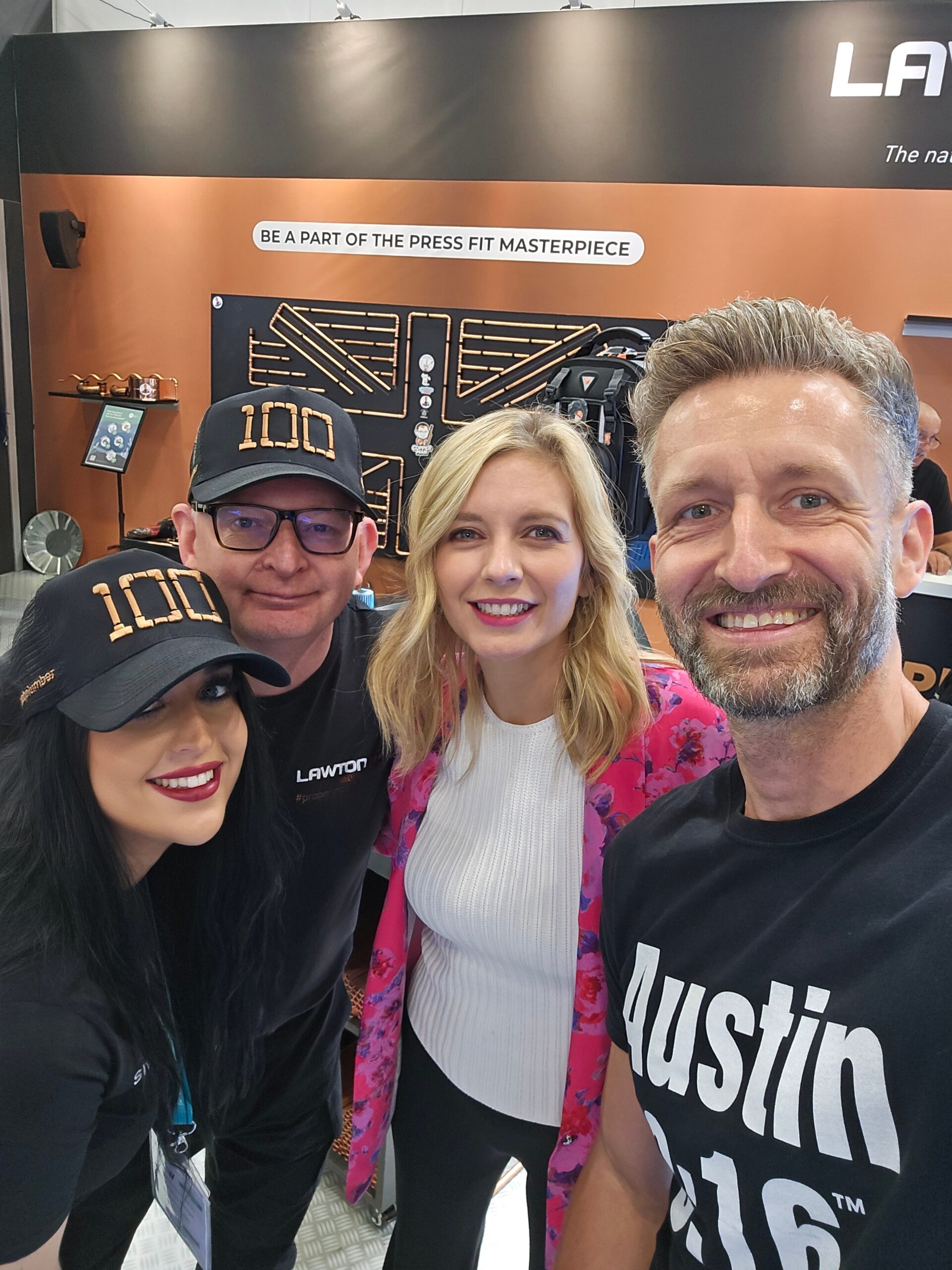
The UK’s stainless steel cylinder market has grown significantly, driven by a shift from instant energy systems like Gas Combi Boilers to more sophisticated stored water systems that integrate multiple energy sources such as solar and heat pumps.
These advanced systems require cylinders made from strong materials like stainless steel grades 316 and Duplex, known for their high-pressure resilience and corrosion resistance.
This trend towards more robust and efficient energy solutions is reshaping the industry, prompting advancements in material use and manufacturing techniques.
As the demand for durable, high-performance components rises, the industry’s focus on sustainability and technological innovation becomes increasingly important.
In this landscape, stainless steel stands out as an essential material that guarantees the longevity and reliability of energy systems across various industries.
Advantages of Stainless Steel Fittings:
Stainless steel fittings are integral to industries requiring durability and reliability. Their key advantages include:
- Corrosion Resistance: Stainless steel withstands environmental challenges, such as exposure to corrosive chemicals or saline conditions, protecting systems from rust and decay.
- Longevity: The durability of stainless steel fittings reduces the need for frequent replacements, providing a long-term, cost-effective solution for industrial applications.
- Strength: Stainless steel fittings are capable of withstanding high pressures and temperatures, making them essential for safety and efficiency in demanding operations.
- Hygiene: Stainless steel’s water-resistant surface prevents bacterial contamination, making it ideal for sectors like food processing, healthcare, and water management.
Opting for Wardtec to supply your stainless steel fittings offers several unique advantages:
- Wide Range: We specialise in all grades of stainless steel, with a focus on 316 and Duplex grades, ensuring products suited for both general and high-corrosion environments. The 316 Grade is known for its enhanced corrosion resistance and durability, suitable for a wide array of environments. While Duplex grade offers even greater strength and corrosion resistance, ideal for extremely harsh conditions.
- Customisation and Flexibility: Whether it’s small batches or large orders, we adapt to your needs with tailored supply plans.
- Advanced Manufacturing: Utilising the latest CNC technology, we ensure every fitting is crafted with precision.
- ISO 9000 Certified: Our commitment to quality is backed by our ISO 9000 certification, reflecting our industry-leading standards. In addition, every stainless steel fitting undergoes rigorous inspection, ensuring adherence to the highest standards.
- Material Certification: We provide comprehensive material certification at no extra cost, ensuring complete traceability.
Types of Stainless Steel Fittings:
Stainless steel fittings come in various shapes and designs, each tailored to meet specific requirements in plumbing and heating systems.
Understanding these different types can help professionals choose the right fittings for their specific installation needs.
Here are some of the most used stainless steel fittings in water cylinder and heat pump applications:
- Elbows: These fittings change the direction of the flow in a piping system. Elbows are typically available in two angles, 45 degrees and 90 degrees, allowing for directional change without a significant pressure drop. They are crucial in compact spaces where the piping needs to navigate around obstacles.
- Tees: Tees are T-shaped fittings that split or combine the flow in a system. They are used when branching off to different fixtures or when two sources converge into one. Tees come in various types, including equal tees, which have the same size openings, and reducing tees, which have one smaller outlet for controlled flow distribution.
- Couplings: Used to connect two pieces of pipe together, couplings come in two types—regular and reducing. Regular couplings connect pipes of the same diameter while reducing couplings connect pipes of different diameters. These are essential for extending or altering the length of a pipe run.
- Reducers: These fittings connect pipes of different diameters, allowing for a smooth transition and minimising turbulence and energy loss. Reducers come in two forms: concentric reducers, which are symmetrical and ideal for vertical piping, and eccentric reducers, which maintain one side of the pipe level, preferred in horizontal applications.
- Adapters: Adapters transition between different types or sizes of pipes or between threaded and non-threaded connections. They are crucial for integrating components from different systems or standards and ensuring compatibility across various equipment.
- Flanges: Flanges are another type of fitting used to connect pipes, valves, pumps, and other equipment to form a piping system. They provide easy access for cleaning, inspection, or modification. Stainless steel flanges are highly resistant to corrosion, making them ideal for harsh environments and ensuring a secure and leak-proof connection.
Each type of fitting plays a vital role in the overall functionality and efficiency of water cylinder and heat pump systems.
Selecting the appropriate stainless steel fitting is not only about ensuring physical fit but also about enhancing the longevity and performance of your whole system.
Factors to Consider When Choosing Stainless Steel Fittings:
Selecting the right stainless steel fittings is critical to the success of any project involving water cylinders or heat pump systems, and there are several factors you should consider:
- Material Grade: Select the grade that best suits your environmental needs. For example, Grade 316 offers excellent corrosion resistance, ideal for harsh conditions. Others common grades you could consider are 304 and Duplex.
- Size and Dimensions: Ensure that the fittings match the size and dimensions of your existing system. Keep in mind that incorrect sizing can lead to leaks, increased pressure drops, and even system failure!
- Threading Options: Choose the correct threading type for compatibility with your system and to ensure leak-free connections.
- Compatibility with Piping Systems: The fittings must be compatible with the operating conditions and materials of your existing system to ensure proper functionality.
- Supplier Quality: Assess the supplier’s commitment to quality. A reputable supplier should adhere to stringent quality standards and provide necessary certifications – for example, our ISO 9001 certification indicates a good Quality Management System. For a deeper look into evaluating supplier quality, read this article.
- Project Requirements and Budget: Balance performance needs with your budget, choosing fittings that offer the best value without compromising safety or functionality.
To guarantee the long-term efficiency and safety of stainless steel fittings, proper installation and routine maintenance are crucial.
The following tips provide industry-specific best practices to help you install and maintain stainless steel fittings effectively:
Stainless Steel Fittings Installation Tips:
- Check Compatibility: Before installation, ensure the fittings are fully compatible with the existing pipes in terms of material, size, and threading. For hot water cylinder and heat pump systems, pay attention to pressure ratings and material compatibility.
- Prepare the Surface: Clean all surfaces thoroughly to remove any dirt, grease, or debris that might impair a tight seal.
- Accurate Alignment: Carefully align fittings to ensure proper placement and orientation. This prevents stress on pipes and fittings, reducing the risk of leaks and failures.
- Use the Right Tools: Use appropriate tools for installation to avoid damaging the fittings. Do not overtighten, as this can strip threads or crack the fittings.
- Effective Sealing: To prevent leaks in threaded connections, use appropriate thread sealants compatible with stainless steel. Teflon tape or pipe dope can be used, but ensure it is suitable for the system’s temperature and pressure.
Common Industry Applications
Stainless steel fittings are indispensable in water cylinder and heat pump systems, where their resistance to corrosion ensures the longevity and efficiency of these setups. Common applications include:
- Pressure Maintenance: In water cylinders, stainless steel fittings are used to maintain optimal pressure levels, ensuring a consistent water supply, and preventing system damage due to pressure variations.
- Temperature Regulation: Heat pump systems benefit from the thermal resistance of stainless steel fittings, which can handle varying temperatures without degrading, crucial for systems that undergo frequent temperature changes.
- Connection Integrity: The superior strength and leak resistance of stainless steel fittings ensure tight, secure connections in both water cylinders and heat pumps, preventing leaks and maintaining system integrity.
Conclusion
Stainless steel fittings offer many advantages critical to the success of numerous industrial applications due to their exceptional corrosion resistance, durability, and ability to handle high-pressure and high-temperature environments.
These fittings ensure operational efficiency and longevity.
Furthermore, the material’s hygienic properties make it ideal for use in sectors such as food processing, healthcare, and water management, where cleanliness and safety are most important.
Contact Wardtec for Your Stainless Steel Fittings Needs
Throughout this guide, we have detailed the types, applications, and installation and maintenance practices for stainless steel fittings, particularly in systems like water cylinders and heat pumps.
As you consider the best stainless steel fittings for your next project, Wardtec is here to provide high-quality options tailored to your needs and can further advise you on the best-suited products.
Our fittings, made predominantly from 316 grade and Duplex stainless steel, offer enhanced performance in harsh environments, aligning with our commitment to quality and excellence.
Contact Wardtec today to discuss how our stainless steel fittings can improve your project’s performance and reliability. Partner with us to ensure your installations achieve functional excellence and cost-effectiveness.



